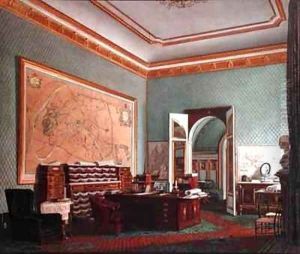Fortune de Fournier Paintings
Fortune Louis Fournier, often known as Fortune de Fournier, was a French artist born on October 3, 1825, in Saint-Christophe-sur-le-Nais, France. Though not as renowned as some of his contemporaries, Fournier made contributions to the art world during the 19th century, a period rife with artistic evolution and innovation.
Fournier's artistic journey began at a young age, and he was particularly known for his caricatures and illustrations. His works often reflected the social and political atmosphere of France during his lifetime, which was marked by the events surrounding the Revolution of 1848, the Second Empire under Napoleon III, and the early years of the Third Republic.
Fournier contributed to various periodicals of his time, such as 'Le Charivari', a French satirical magazine that published caricatures and political cartoons. His association with such publications placed him among the ranks of other notable caricaturists of the 19th century, who used their art as a form of social commentary and critique.
Despite his work in caricature, Fournier also ventured into other artistic realms. He was adept at oil painting and watercolor, and his subject matter extended beyond satire to include landscapes, portraits, and genre scenes depicting everyday life. His style was influenced by the broader artistic movements of his time, including Romanticism and Realism, which sought to capture the world with emotional depth and an eye for the unvarnished truth.
Fournier's art was exhibited at the Paris Salon, an official art exhibition of the Académie des Beaux-Arts in Paris, which was the primary venue for artists to gain recognition in France at the time. His participation in these exhibitions helped to solidify his status as a professional artist.
Despite a career that was active and multifaceted, Fortune de Fournier did not achieve the same level of fame as some of his peers. Nevertheless, his works remain a testament to the diverse artistic currents and societal changes of 19th-century France. Fortune de Fournier passed away on April 20, 1884, leaving behind a body of work that continues to be of interest to historians and collectors of French art and caricature.
